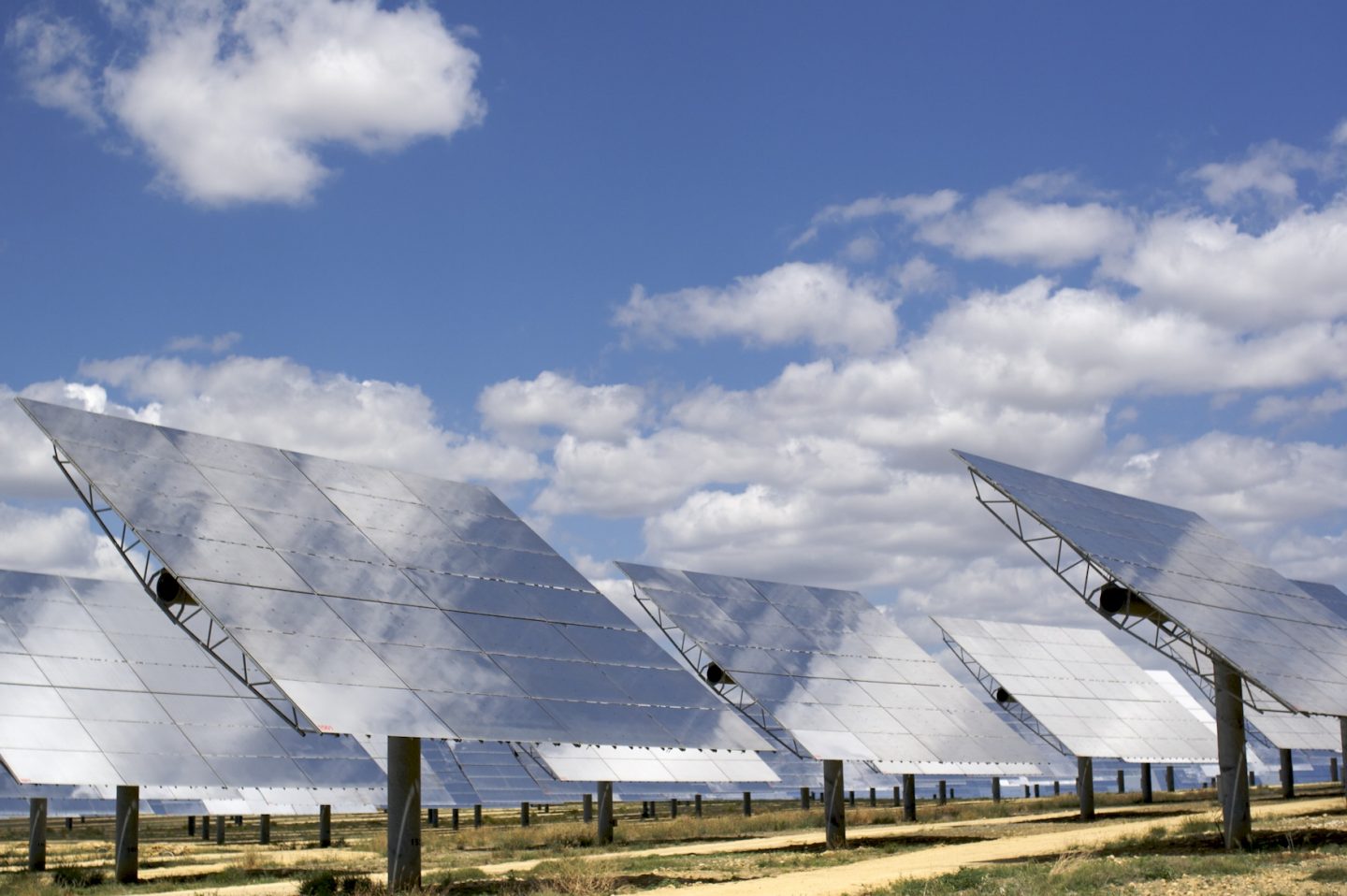PARSEC sectors: Energy
Application fields: Energy & Natural Resources
Keywords: Concentrated Solar Power, inspection, irradiation, Linear Fresnel Reflectors, maintenance, Parabolic Dish Systems, Parabolic Trough Collectors, renewable, site selection, solar, Solar Power Towers
Also known as solar thermal energy, Concentrated Solar Power (CSP) has evolved to be used mainly for industrial or utility purposes, being gradually becoming an advantageous alternative to the PV. Currently, Spain and the United States are the world’s leading countries applying these technologies, with installed capacities of 2.2 gigawatts (GW) and 1.8 gigawatts (GW), respectively.

CSP uses hundreds of heliostats that focus the sunlight onto a large heat exchanger known as receiver. This is located on the top of a tower, containing a pipe containing a heat transfer fluid that absorbs the heat obtained from the sunlight and carries it to the ground into a thermal energy storage tank. When electricity is needed, this fluid flows through a pipe side-by-side with a pipe filled with water. Then, the water goes into a steam generator where it is transformed in steam by the use of the solar heat. This steam finally generates the electricity through a turbine and the remaining is condensed and stored in a water tank. The remaining heat transfer fluid is stored in a cool fluid tank and it then runs back in order to repeat the cycle.
Different new emerging technologies have been introduced in CSP based on the same principle and having the same components but different way of functioning.
Solar power towers (SPT) offer flexibility in operating temperatures up to 565ºC (1050ºF) and allow to store the heat for up to 15 hours. This technology is still in the development phase. Apart from operating with molten salt, as one of the best heat transfer fluids available, they include other advances such as the utilisation of open air or superheated steam, which decrease the operating costs. However, the main drawback is the significant consumption of water for cooling process and cleaning of heliostats. There are examples of the successful utilization of this technology in Julich (Germany) and Solugas (Spain), both of them utilizing pressurized air coupled to combined cycle turbines. Also in US, SPT are the most used technology, allowing the production of up to 377 megawatts of capacity.
Parabolic Trough Collectors (PTC) is the most commercially mature system as well as the most widespread technology type among CSP (up to 3.5 GW out of the total 4.8GW of installed CSPs worldwide). Parabolic troughs are straight in one dimension and curved as a parabola in the other two, lined with a polished metal mirror. The sunlight entering the mirror parallel to its plane of symmetry is focused along the focal line. The tube containing the fluid runs the length of the trough at its focal line. This technology has also the particularity of the heat transfer fluid used, being thermal oil, capable of achieving operating temperatures between 293ºC (560ºF) and 393ºC (740ºF). However, this oil is known to be highly toxic and flammable. Latest innovations look for increasing the efficiency by using alternative heat transfer fluids like molten salts and air, allowing rising the operating temperatures even higher.
Parabolic Dish Systems have lower application rates in commercial and utility scale projects. Despite having higher solar-to-electric conversion, the maximum power capacity of each parabolic dish is too low, what makes them less attractive when compared with other CSP systems.
Linear Fresnel Reflectors (LFR) present similar problematics to parabolic dish systems. LFR plants do not exceed more than 30MW and use water as the heat transfer fluid, with lower operating temperatures. There are few applications in the commercial sector, but as long as optical efficiency issues continue improving, current trends will continue proving the technical feasibility. Future new projects are planned in India, Australia, China, France and South Africa.
EO Relevance
Earth Observation is instrumental in the successful planning of CSP plants, especially determining suitable sites for their deployment. The search for the most economical sites boasting high Direct Normal Irradiation and yet minimized risk for adverse environment effects can be scaled and automated with Big EO Data analytics relying on a mix of remote sensing and in-situ data.
Main stakeholders doing R&D: BP Solar, Omnion Power Engineering, Siemens Solar Industry, Shell Solar Industries, Spectrolab
Main stakeholders in the market: Aalborg CSP, Abengoa, Acciona, GlassPoint Solar, SENER, Royarl Tech CSP, Torresol Energy, Feranova, Novatec Solar, HelioFocus
Leave A Comment
You must be logged in to post a comment.